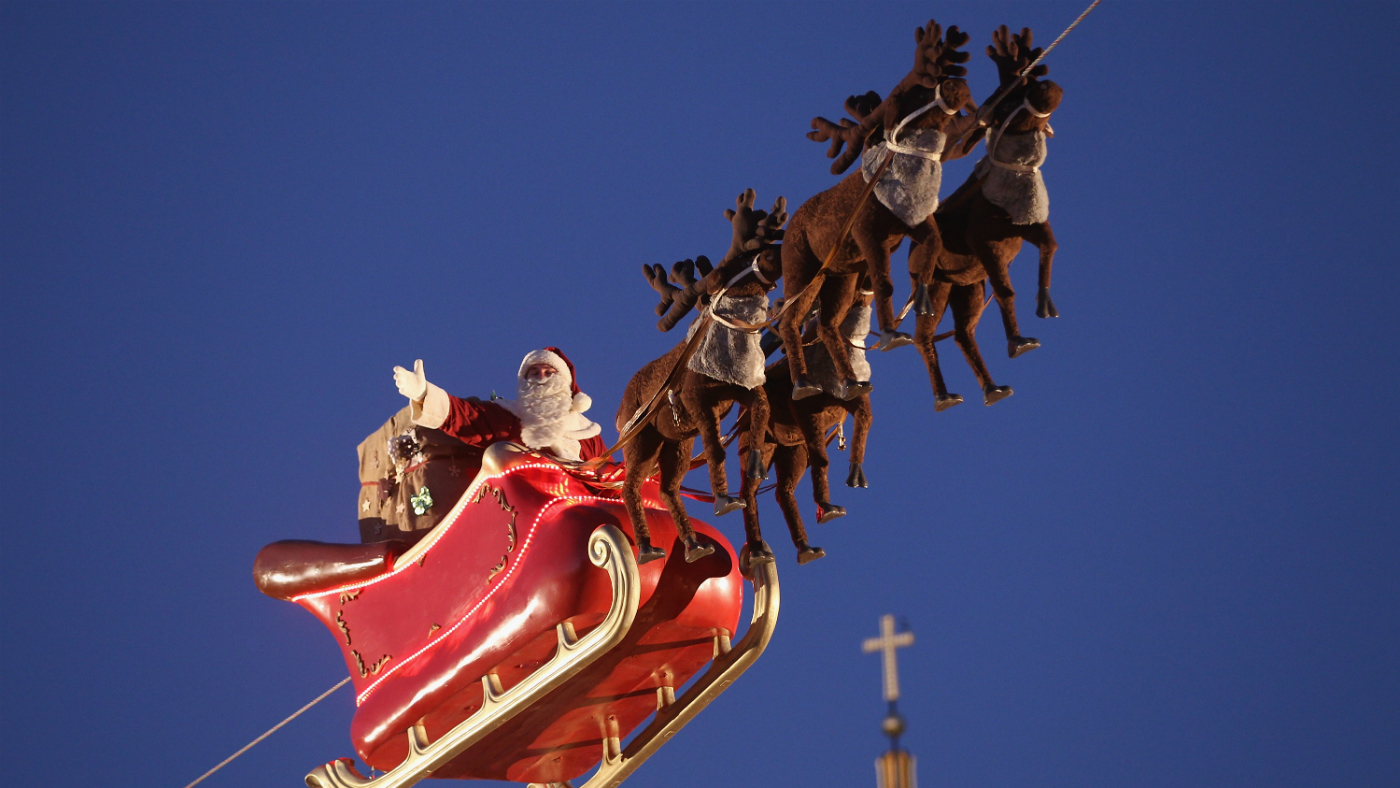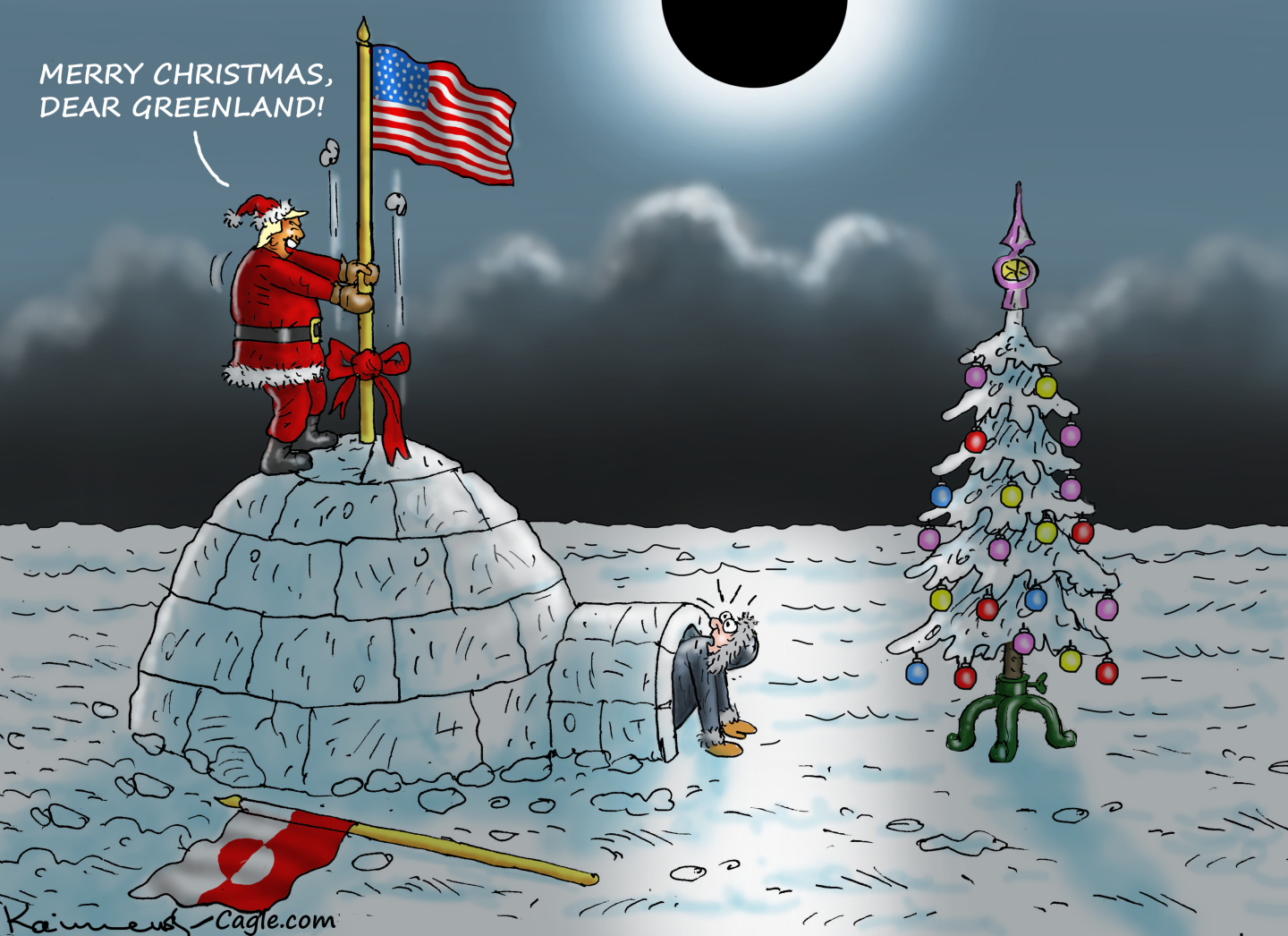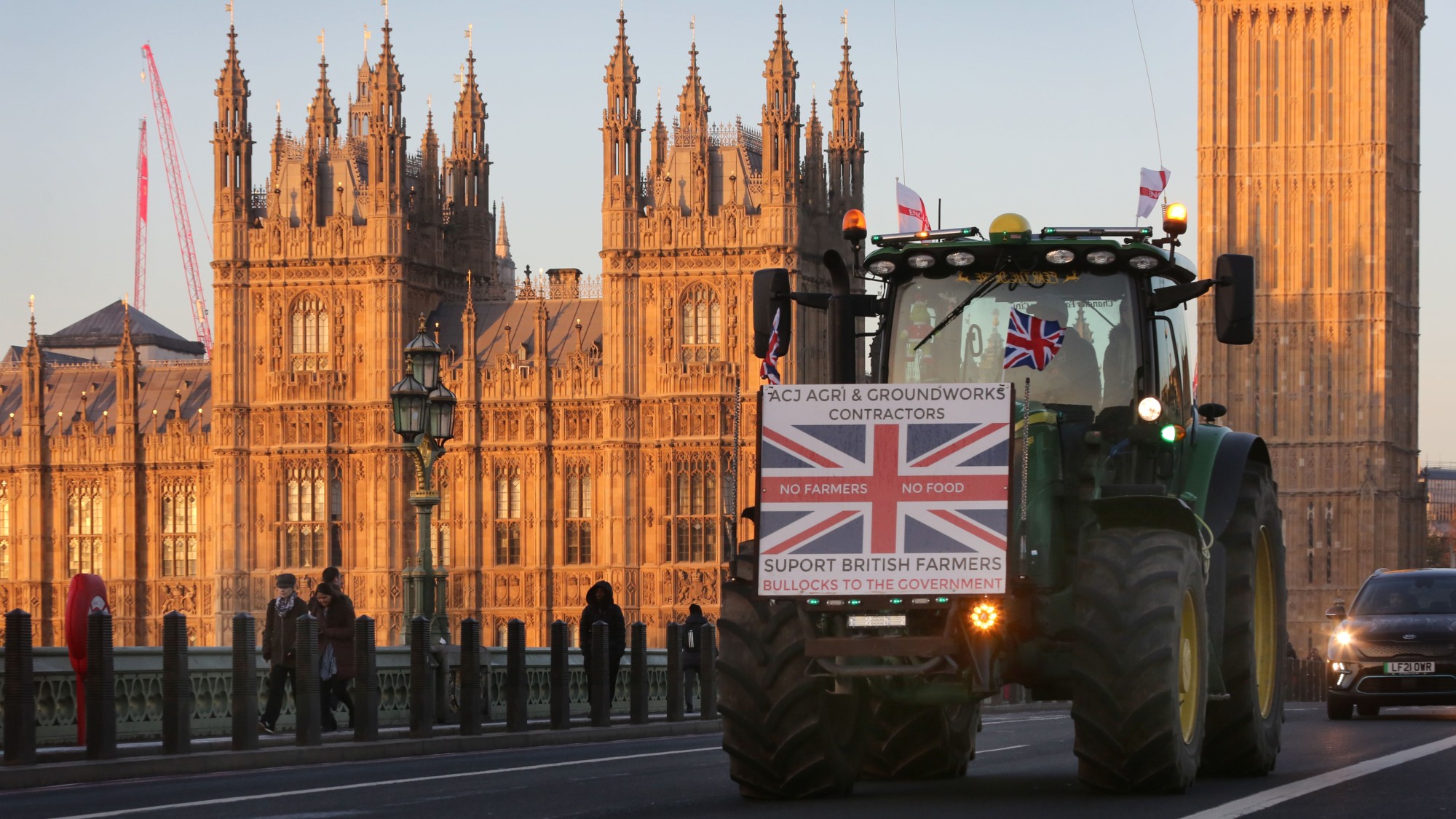How to follow Santa Claus’ journey on Christmas Eve
How trying to phone Father Christmas led US military to launch its festive tracker

Children will once again be able to monitor Father Christmas’s progress this year thanks to the North American Aerospace Defense Command (Norad) festive tracker.
The interactive tool has been around for more than 60 years and allows users to follow Santa on his journey across the globe.
General Terrence O’Shaughnessy, commander of Norad and US Northern Command, said: “In addition to our day-to-day mission of defending North America, we are proud to carry on the tradition of tracking Santa as he travels along his yuletide flight path.”
The Week
Escape your echo chamber. Get the facts behind the news, plus analysis from multiple perspectives.

Sign up for The Week's Free Newsletters
From our morning news briefing to a weekly Good News Newsletter, get the best of The Week delivered directly to your inbox.
From our morning news briefing to a weekly Good News Newsletter, get the best of The Week delivered directly to your inbox.
–––––––––––––––––––––––––––––––For a round-up of the most important stories from around the world - and a concise, refreshing and balanced take on the week’s news agenda - try The Week magazine. Start your trial subscription today –––––––––––––––––––––––––––––––
What is the Norad festive tracker?
Norad “defends the airspace of America and Canada, and it was merely an accident that its now famous tracker was created”, says Kent Live.
The news website explains that a 1955 advert showing a telephone number for children to call Santa misprinted that number.
A free daily email with the biggest news stories of the day – and the best features from TheWeek.com
“Instead of reaching Santa, the phone number put kids through to Norad. The director of operations at the time, Colonel Harry Shoup, had his staff check the radar for indications of Santa making his way south from the North Pole,” the site adds.
Time magazine reports that the tracker goes live on 1 December every year, “spending the weeks leading up to Christmas educating children about geography”.
General O’Shaughnessy said: “In addition to our day-to-day mission of defending North America, we are proud to carry on the tradition of tracking Santa as he travels along his yuletide flight path, says the Evening Standard.
“The same radars, satellites and interceptors employed on December 24 are used year-round to defend Canadian and American airspace from threats.”
How far does Father Christmas fly?
The Telegraph reports that “every year on Christmas Eve, Santa sets off on his sleigh from Lapland with his trusty reindeer, travelling an estimated 510,000,000km – approximately 1,800 miles per second.
“Christmas Eve is a busy time for Father Christmas as he needs to visit 390,000 homes per minute – or 6,424 per second,” the paper adds.
How does Santa differ around the world?
“While Britons often picture Father Christmas to be a jolly character with a white beard, wearing a red suit and big black boots, other countries around the world visualise the beloved festive figure differently,” the Telegraph says.
It notes that in Belgium and the Netherlands, Santa is known as “Sinterklaas”, who wears a bishop’s alb and cape with a ruby ring and travels on a white horse, while in Russia, “Grandfather Frost” arrives on New Year’s Eve to deliver gifts.
Elsewhere, in France, “Pere Noel” rides a donkey called “Gui”, while in Finland, “Joulupukki” knocks on children’s doors on Christmas Eve to ask if they have behaved themselves.
-
 A foodie guide to Edinburgh
A foodie guide to EdinburghThe Week Recommends Go all-out with a Michelin-starred meal or grab a casual bite in the Scottish capital
-
 Political cartoons for December 24
Political cartoons for December 24Cartoons Wednesday's political cartoons include Christmas in Greenland, grinchflation, and California floods
-
 Is there a Christmas truce in the Starmer farmer ding-dong?
Is there a Christmas truce in the Starmer farmer ding-dong?Today’s Big Question There’s an ‘early present’ for farmers but tensions between Labour and rural communities remain
-
 How Bulgaria’s government fell amid mass protests
How Bulgaria’s government fell amid mass protestsThe Explainer The country’s prime minister resigned as part of the fallout
-
 Femicide: Italy’s newest crime
Femicide: Italy’s newest crimeThe Explainer Landmark law to criminalise murder of a woman as an ‘act of hatred’ or ‘subjugation’ but critics say Italy is still deeply patriarchal
-
 Brazil’s Bolsonaro behind bars after appeals run out
Brazil’s Bolsonaro behind bars after appeals run outSpeed Read He will serve 27 years in prison
-
 Americans traveling abroad face renewed criticism in the Trump era
Americans traveling abroad face renewed criticism in the Trump eraThe Explainer Some of Trump’s behavior has Americans being questioned
-
 Nigeria confused by Trump invasion threat
Nigeria confused by Trump invasion threatSpeed Read Trump has claimed the country is persecuting Christians
-
 Sanae Takaichi: Japan’s Iron Lady set to be the country’s first woman prime minister
Sanae Takaichi: Japan’s Iron Lady set to be the country’s first woman prime ministerIn the Spotlight Takaichi is a member of Japan’s conservative, nationalist Liberal Democratic Party
-
 Russia is ‘helping China’ prepare for an invasion of Taiwan
Russia is ‘helping China’ prepare for an invasion of TaiwanIn the Spotlight Russia is reportedly allowing China access to military training
-
 Interpol arrests hundreds in Africa-wide sextortion crackdown
Interpol arrests hundreds in Africa-wide sextortion crackdownIN THE SPOTLIGHT A series of stings disrupts major cybercrime operations as law enforcement estimates millions in losses from schemes designed to prey on lonely users